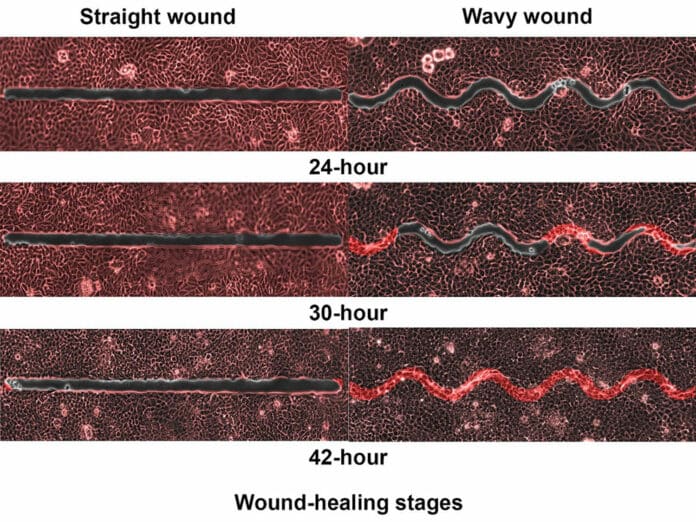When it comes to wound healing, an intriguing phenomenon has puzzled researchers and medical professionals alike: wavy wounds tend to heal faster than straight wounds. This observation has led to numerous investigations and studies to understand the underlying mechanisms behind this phenomenon.
While the exact reasons are still being explored, recent research has shed some light on the potential factors contributing to the accelerated healing of wavy wounds. In this article, we delve into the fascinating world of wound healing to unravel why wavy wounds have a distinct advantage in the healing process compared to their straight counterparts.
Wavy wounds heal faster than straight wounds due to the influence of shape on cell movements, according to a study conducted by researchers at NTU Singapore. By employing advanced imaging technology on synthetic wounds resembling human skin, the scientists observed that cells near wavy wounds exhibited a swirling motion. In contrast, cells near straight wounds moved in parallel lines along the wound edges.
The NTU team concluded that the swirling movement, resembling a vortex, is vital in gap-bridging, where cells form bridges to facilitate tissue healing.
This discovery establishes a direct correlation between gap bridging and the speed of wound healing, marking a significant breakthrough. The research findings promise to develop more efficient strategies to expedite wound healing, ultimately enhancing wound management, tissue repair, and plastic surgery techniques.
A recent study found that wavy wounds heal faster than straight wounds. The researchers discovered that the irregular shape of wavy wounds stimulates the activation of specific cells called fibroblasts, which play a crucial role in the healing process. These fibroblasts are more active in wavy wounds, promoting faster tissue regeneration and reducing the overall healing time.
Additionally, the researchers observed that the wavy shape of the wound provides better blood circulation and nutrient delivery to the affected area, further enhancing the healing process. The findings suggest that considering wound shape and design during medical interventions could optimize healing outcomes and improve patient recovery.
In conclusion, the study revealed that wavy wounds heal faster than straight wounds. The irregular shape of wavy wounds triggers the activation of fibroblasts, leading to enhanced tissue regeneration and reduced healing time. Moreover, the wavy shape facilitates better blood circulation and nutrient delivery to the wound site, further promoting healing. These findings emphasize the significance of wound shape in optimizing healing outcomes and improving patient recover.
